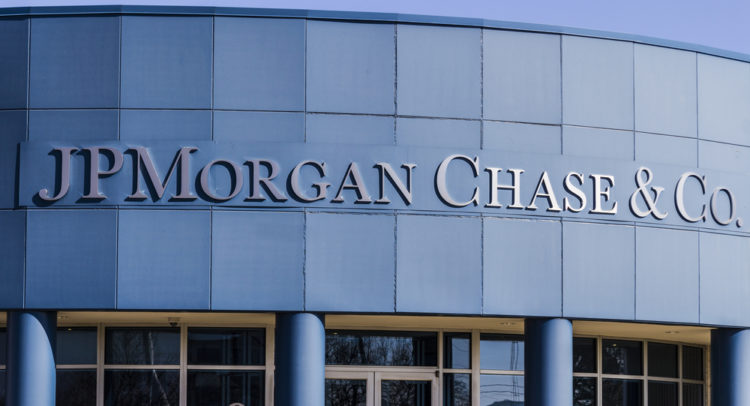JPMorgan Chase & Co. (JPM) is scheduled to report its second-quarter results on July 13 before the market opens. Shares of the company have gained 22% year-to-date, closing at $153.59 on July 7.
Maximize Your Portfolio with Data Driven Insights:
- Leverage the power of TipRanks' Smart Score, a data-driven tool to help you uncover top performing stocks and make informed investment decisions.
- Monitor your stock picks and compare them to top Wall Street Analysts' recommendations with Your Smart Portfolio
JPMorgan has consistently outperformed expectations over the past year and added huge reserves throughout 2020. Year-over-year comparisons could continue to show growth as the prior-year quarter’s results were affected by markdowns on held-for-sale positions and lower consumer spending.
Earnings Preview
The Earnings Whisper numbers for Q2 earnings and revenue are expected to be $3.03 per share and $29.99 billion, respectively.
For the full Fiscal year 2021, the company has guided for Net Interest Income (NII) of approximately $55 billion, subject to market conditions, and adjusted expenses of $70 billion. (See JPMorgan Chase stock charts on TipRanks)
Prior Period Results
In the first quarter, earnings increased a whopping 477% to $4.50 per share and outpaced analyst estimates of $3.10 per share. Earnings were boosted by a $5.2 billion release of net reserves.
Revenue came in at $32.3 billion and surpassed the Street’s estimate of $30.52 billion.
NII declined 11% to $13 billion year-over-year due to lower interest rates but was partially offset by balance sheet growth.
Non-interest revenue grew 39% to $20.1 billion, backed by an increase in both CIB Markets revenues and higher Investment Banking (IB) fees.
Factors To Look For
Consumer spending is slowly returning to pre-pandemic levels and banks stand to gain as customers take out home loans, refinance mortgages, and buy vehicles.
The company’s card division will continue to remain under pressure as customers pay off their card debts with stimulus packages and use more cash to fund purchases. However, it will be interesting to analyze spending trends going forward to gauge the real turnaround in the economy.
Another important metric for the bank, net interest margins, will continue to remain suppressed due to the low-interest-rate environment.
Also, it will be interesting to see how JPM’s provision for loan losses are reported, a measure of the bank’s customer loan defaults.
Additionally, banks earn fees by providing advisory and other services in capital markets operations. With the bank being active in M&A activities and new public offerings, both the Corporate & Investment Bank (CIB) and Commercial Banking segments are expected to report solid revenue.
Recent Developments
On June 28, JPM said that it had completed the Federal Reserve’s 2021 Comprehensive Capital Analysis and Review (“CCAR”) stress test process. Accordingly, JPMorgan’s indicative Stress Capital Buffer (“SCB”) requirement is 3.2% (down from the current 3.3%), and the Firm’s minimum Standardized Common Equity Tier 1 (CET 1) capital ratio is 11.2% (down from the current 11.3%).
The company’s final SCB requirement will be provided by the Fed by August 31, 2021, and will become effective from October 1, 2021, through September 30, 2022.
Chairman and CEO Jamie Dimon said, “The Federal Reserve’s hypothetical CCAR stress test once again showed that banks continue to have strong capital levels and could withstand an extreme outcome while continuing to support the broader economy.”
On May 17, JPM declared a common stock dividend of $0.90 per share payable on July 31 to stockholders of record on July 6.
The Board intends to increase the quarterly common stock dividend to $1.00 per share for the third quarter of 2021.
On May 13, the company announced comprehensive steps it is taking in its efforts to align its financing activities with the climate goals of the Paris Agreement.
Dimon said, “JPMorgan Chase is committed to doing its part by working with clients around the world to reduce emissions and by ensuring our own operations remain carbon neutral.”
Analyst Recommendations
KBW analyst David Konrad recently initiated coverage of JPMorgan with a Hold rating and price target of $167, implying 8.7% upside potential to current levels.
The analyst remains positive on large-cap banks, despite his views on the volatility and uncertainty related to consumer spending trends driven by government stimulus packages, as he sees the Fed increasing short-term rates.
Konrad believes JPM is trading at “historically high” multiples. He states that the current revenue environment may become difficult for banks that are gaining from the huge growth in their bond portfolios.
The stock has a Moderate Buy consensus rating based on 8 Buys, 4 Holds, and 1 Sell. The average JPMorgan Chase price target of $173.55 implies 13% upside potential to current levels. Shares have gained 66.2% over the past year.

Related News:
PepsiCo Earnings Preview: Here’s What To Watch for
WISH Receives Payment Institution License for E.U.; Street Remains Cautiously Optimistic
Knight-Swift Acquires AAA Cooper; Shares Jump 4%









